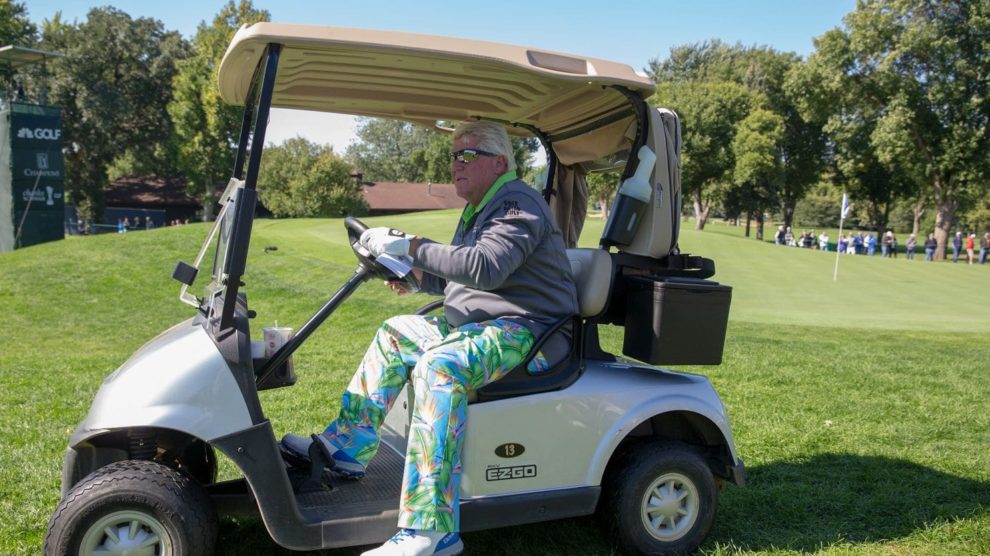In a difficult, unique time, golfers have been able to turn to the game as a refuge -- from the stress inside their homes, from their work situation, from the worries about the world around us.
However, the conditions that have come with playing golf safely in the age of COVID-19 have created some stress for golf course owners and operators. Shared surfaces have been removed or modified. Marshals have more to enforce than pace of play, and pro shops have been forced to quickly adapt to new realities of getting golfers on and around the course.
One of biggest changes has been the shift to single-rider golf carts. With states requiring golf courses to limit golf carts to a single rider (unless the passenger lives in the same home as the driver), courses have been sending players out solo.
Many courses have allowed four carts to go out at once, with a golfer in each cart. Some courses have allocated two carts to a group, asking golfers to load up all four bags but only have two drivers for the full round.
With more carts on the course at one time, pace of play can improve, but the additional vehicles can cause stress and damage to a golf course if golfers aren't paying attention and doing their part.
The US Golf Association (USGA) is asking golfers to follow some basic advice to help keep the courses they're enjoying in great shape throughout the golf season.
Adam Moeller is the director of education for the USGA Green Section, which works with courses, superintendents and agronomists around the country. The research the Green Section does has been instrumental in decreasing the game's dependence on water and providing great playing conditions based on local factors for golfers nationwide.
Moeller says every golf course is different. Some courses are asking players to remain on cart paths, while others are asking players to scatter. Some courses want players only to ride in fairways, while others only want players to ride in the rough. Some courses have cart paths run the full length of holes, while others still have paths only near tees and greens.
While the rules and expectations are different from course to course, Moeller says there are still best practices players can employ anywhere they play. Golfers should stay on the cart paths -- all four wheels, not just two -- as often as possible. Don't park carts half-on, half-off the path, which leads to wear and tear on the edges.
Try to avoid congregating off the cart path on tees, in landing areas off the tee and around greens. While it might be convenient to park four carts in a cluster around the fairway, spreading them out will prevent turf damage and keep fairways playing the right way.
Golfers also need to pay attention to signage and staff instructions on their rules around cart use. Courses may have more entry and exit points, as well more portion of the course staked off. There's a reason the stakes and ropes in place. Also, golfers should pay attention to avoid obvious areas where they shouldn't be driving.
Avoid areas where water is puddling or there's obviously mud. Riding over those areas can cause longer-term damage.
Speaking for any superintendent, Moeller wants golfers to simply pay attention and be responsible with their cart usage. Nothing crazy. Don't drive dangerously or do tricks or peel out.
In a perfect world for supers, golfers would all walk. The stress on the course would be dramatically less. But carts are used, by some measures, in 70 percent of rounds played. They're a huge source of revenue for golf courses and an important convenience for many players. Now, there are more carts simultaneously on courses than ever. However, by taking the right precautions and

